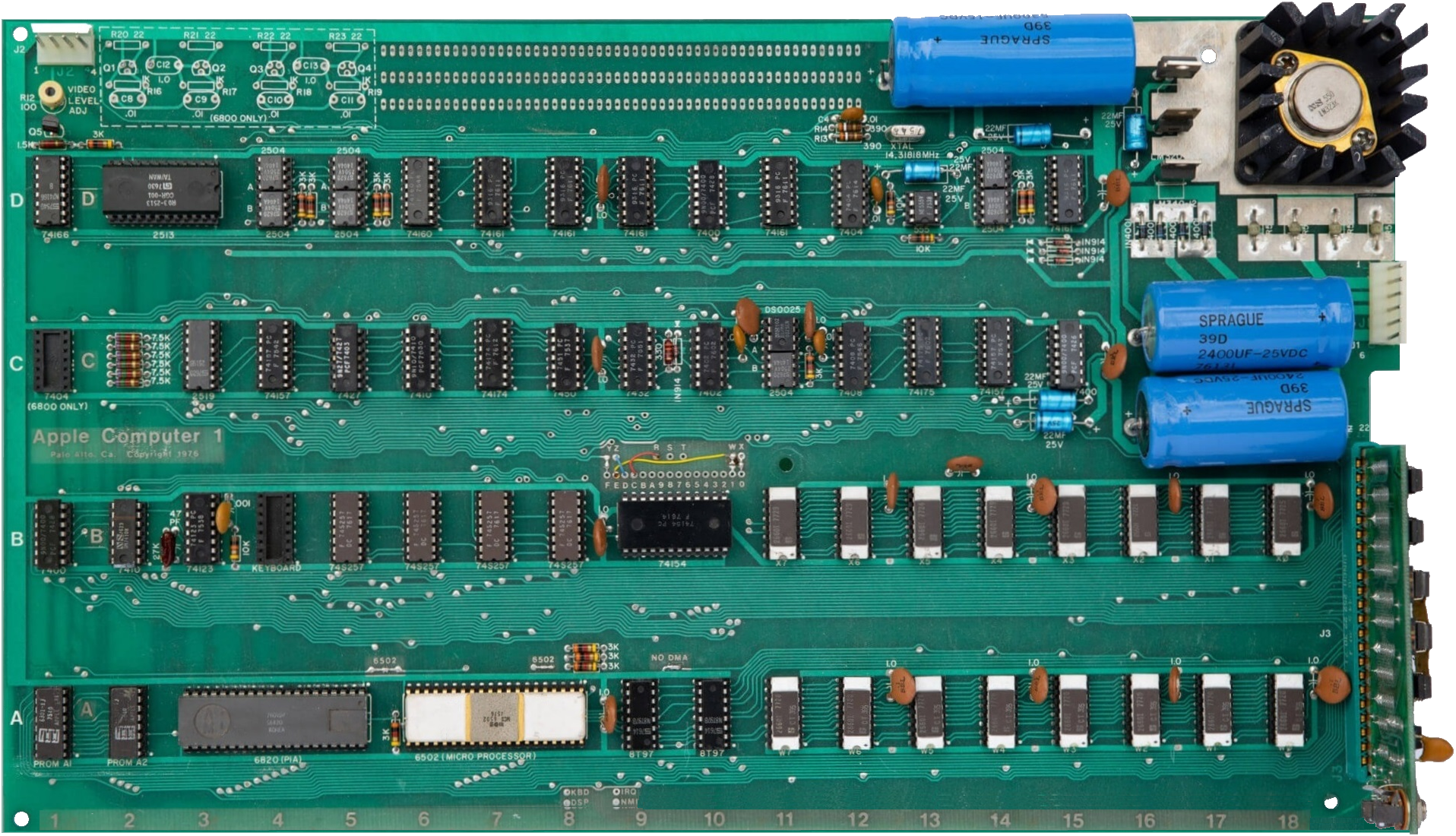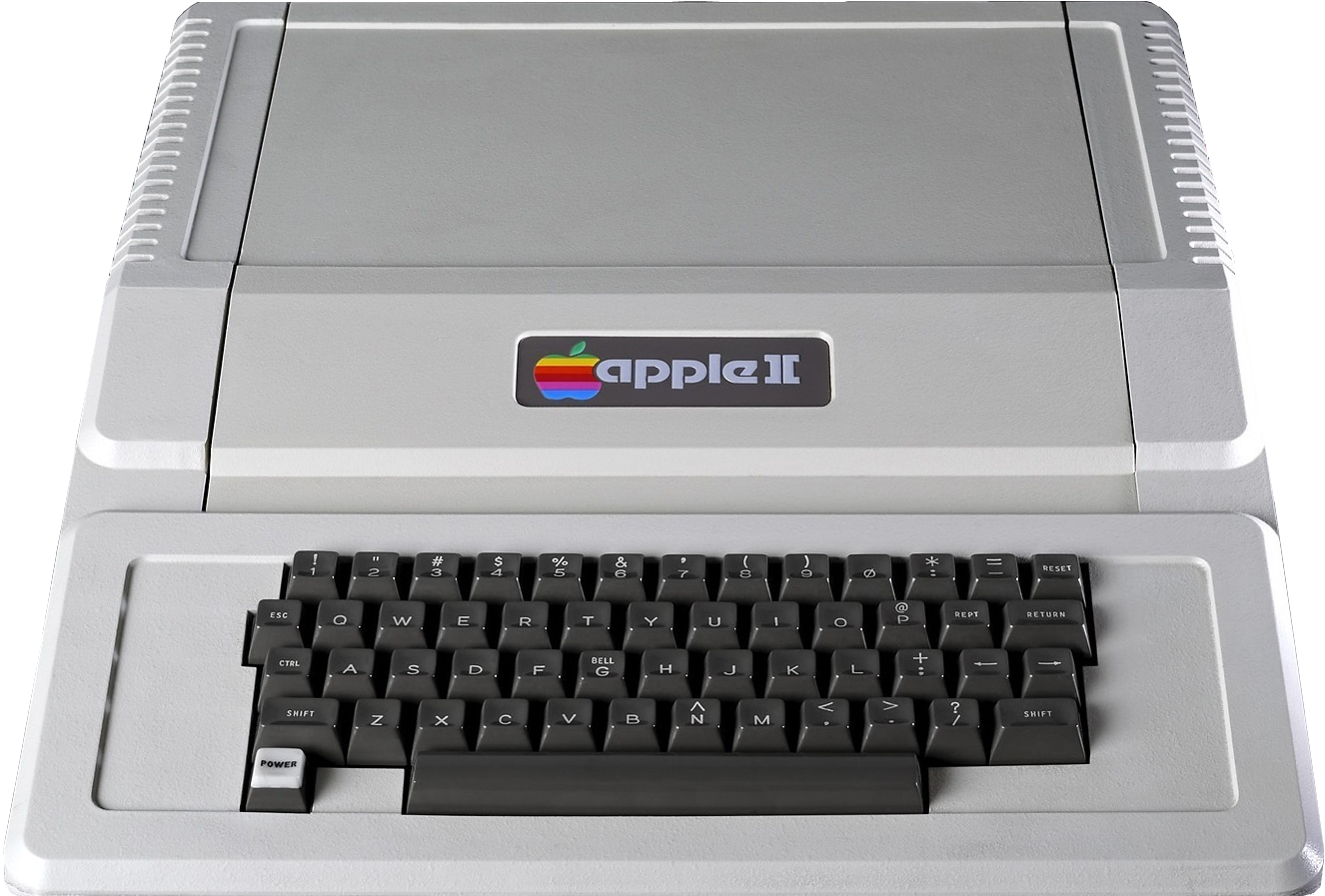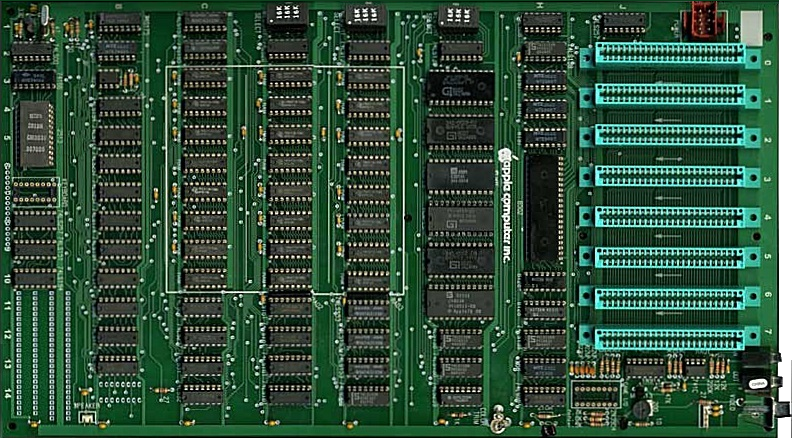Description
Apple I
Release April 1976 | End of production 1977
The Apple I computer consisted mainly of the mainboard, which, supplemented with keyboard, power supply, Panasonic cassette recorder and Sanyo monitor (9 inch), could be used as a computer.
Apple II
Release April 1978 | End of Production 1993
The Apple II computer has the keyboard and power supply integrated. The mainboard was equipped with eight slots for expansion cards. The Apple II was the last computer developed by a single person.
Apple Introduces the First Low Cost Microcomputer System with a Video Terminal and 8K Bytes of RAM on a Single PC Card.
The Apple Computer. A truly complete microcomputer system on a single PC board. Based on the MOS Technology 6502 micro-processor, the Apple also has a built-in video terminal and sockets for 8K bytes of on-board RAM memory. With the addition of a keyboard and video monitor, you'll have an extremely powerful computer system that can be used for anything from developing programs to playing games or running BASIC.
Combining the computer, video terminal and dynamic memory on a single board has resulted in a large reduction in chip count, which means more reliability and lowered cost. Since the Apple comes fully assembled, tested & burned-in and has a complete power supply on-board, initial set-up is essentially "hassle free" and you can be running within minutes. At $666.66 (including 4K bytes RAM!) it opens many new possibilities for users and systems manufacturers.
You Don't Need an Expensive Teletype. Using the built-in video terminal and keyboard interface, you avoid all the expense, noise and maintenance associated with a teletype. And the Apple video terminal is six times faster than a teletype, which means more through put and less waiting. The Apple connects directly to a video monitor (or home TV with an inexpensive RF modulator) and displays 960 easy to read characters in 24 rows of 40 characters per line with automatic scrolling. The video display section contains its own 1K bytes of memory, so all the RAM memory is available for user programs. And the Keyboard Interface lets you use almost any ASCII-encoded keyboard.
Switches and LEDs, as with the ALTAIR 8800, are no longer required. Compared to switches and LED's, a video terminal can display vast amounts of information simultaneously. The Apple video terminal can display the contents of 192 memory locations at once on the screen. And the firmware in PROMS allows you to enter, display and debug programs via the keyboard in hexadecimal representation, making a front panel unnecessary. The firmware also allows your programs to print characters on the display, and since you'll be looking at letters and numbers instead of just LED's, the door is open to all kinds of alphanumeric software (i.e., Games and BASIC).
8K Bytes RAM in 16 Chips! The Apple Computer uses the new 16-pin 4K dynamic memory chips. They are faster and take 1/4 the space and power of even the low power 2102's (the memory chip that everyone else uses). That means 8K bytes in sixteen chips. It also means no more 28 amp power supplies.The system is fully expandable to 65K via an edge connector which carries both the address and data busses, power supplies and all timing signals. All dy-namic memory refreshing for both on and off-board memory is done automatically. Also, the Apple Computer can be upgraded to use the 16K chips when they become available. That's 32K bytes on-board RAM in 16 IC's - the equivalent of 256 2102's!
Images
Apple I Mainboard

Apple II Computer

Apple II Computer inside view

Apple II Mainboard
